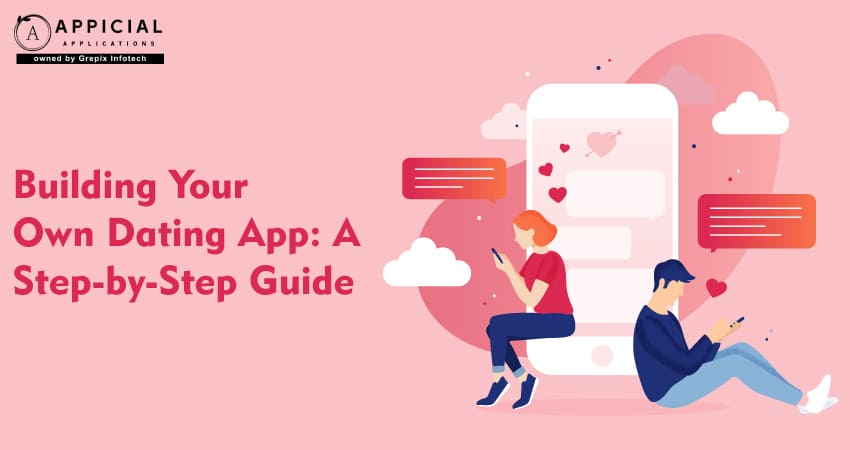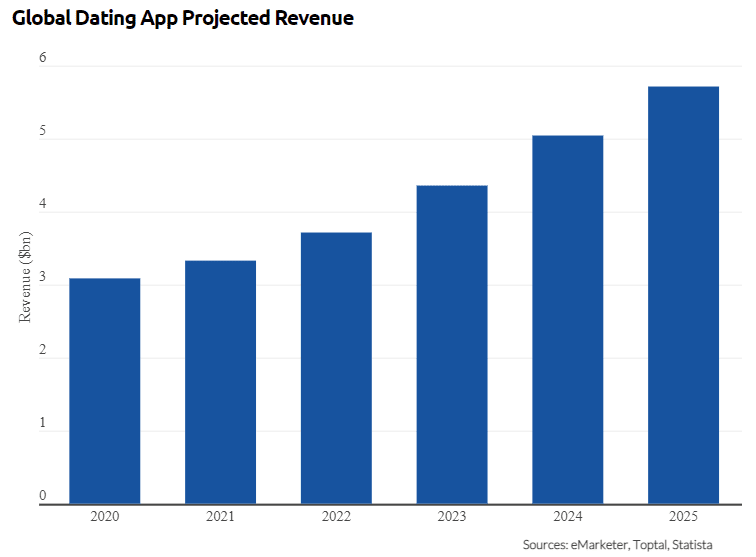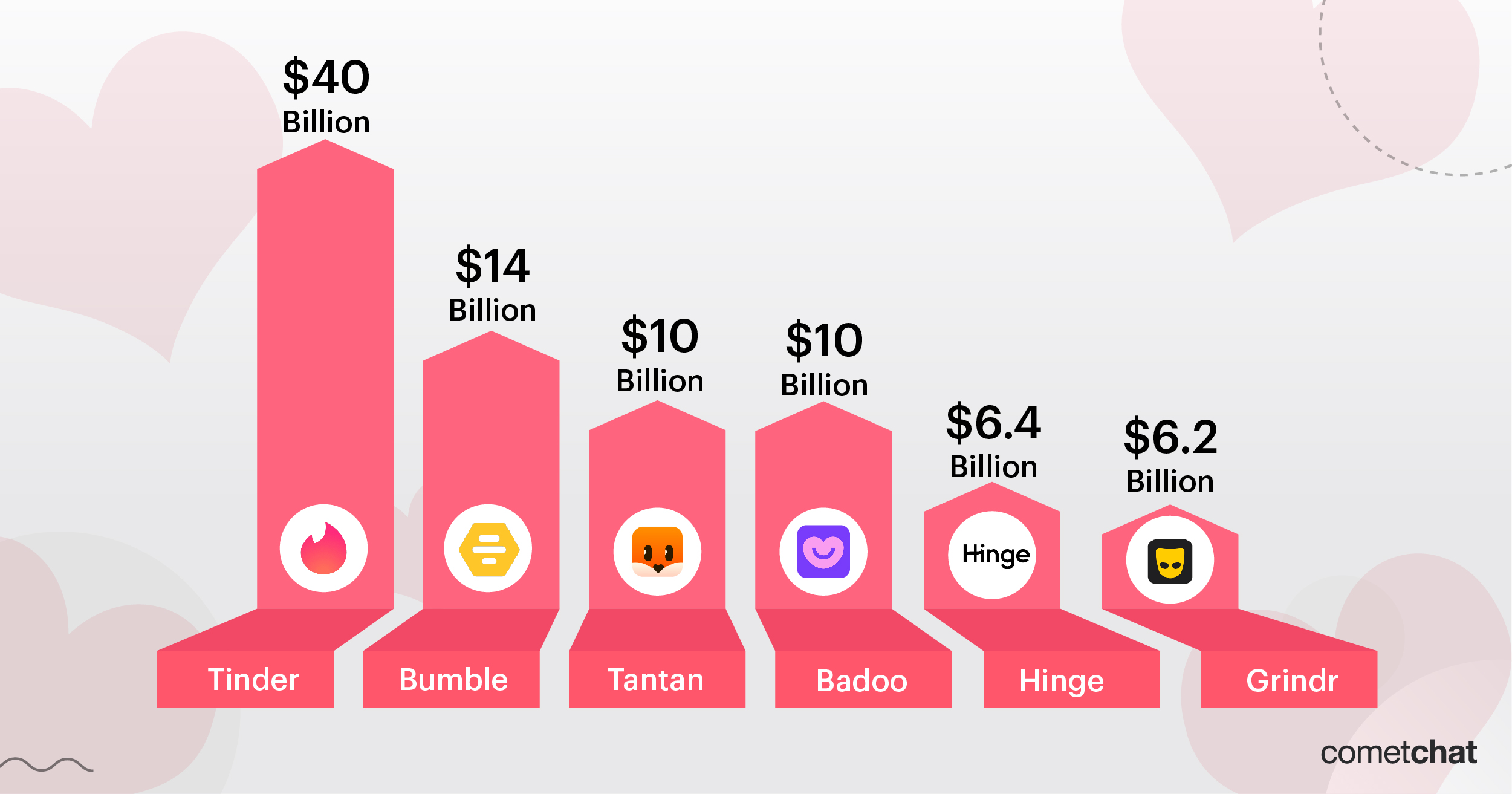
Building Your Own Dating App: A Step-by-Step Guide
So, you’re thinking about creating a dating app? That’s awesome! Dating apps have changed how people connect. The best part? You don’t need to beat Tinder to succeed. There’s room for fresh ideas, niche communities, and new features.
Maybe you’re eyeing a Tinder clone or something entirely different. Either way, building an app people love takes smart planning.
Crafting an online dating app that gains traction poses one of the most significant challenges in this digital landscape. While it's unlikely that your app will overthrow giants like Tinder, that's not the ultimate goal. You have the opportunity to develop a thriving dating app tailored to a specific niche, location, or audience.
Despite the passage of time, the quest for connections and relationships persists as a fundamental aspect of human nature. Love and the desire to be loved continue to drive people, even though 75% of Americans express that finding someone to date has become more challenging over the past decade.
In response to this challenge, dating apps have emerged as a popular solution, transforming the landscape of how we navigate our romantic lives. With a market continuously growing, there is a ripe opportunity to create a dating app that not only caters to user needs but also generates value for businesses. Before delving into the development process, it's crucial to explore the reasons behind the popularity of dating apps, the various types available, and the key considerations for their creation.
Embark on a digital love journey with our cutting-edge dating app! Discover meaningful connections in a crowded online world. Our app caters to diverse preferences, ensuring a personalized experience. Swipe, match, and explore a new era of online dating. Don't settle for ordinary, choose extraordinary. Join us today and redefine your romantic journey!
Why Are Dating Apps So Popular?
Let’s face it- modern life is hectic. People are juggling work, family, and personal goals. Finding time for traditional dating? That’s tough. That’s exactly why dating apps have exploded in popularity.
With just a few taps, users can connect with potential matches anytime, anywhere. No more waiting to meet someone at a bar or social event.
The global market for dating apps is booming. In fact, it’s projected to reach a massive $5.71 billion by 2025. That’s because these apps solve real problems:
- They offer 24/7 access to potential matches. Whether you’re on a lunch break or winding down at night, your next connection is always just a swipe away.
- They cater to busy lifestyles. You can browse profiles or chat while commuting, waiting in line, or during downtime, no extra effort required.
- They let users filter matches by preferences and location. Want to meet someone nearby who shares your values or interests? Dating apps make it easy.
- They help avoid awkward in-person rejection. You can express interest (or not!) from the safety and comfort of your phone.

Dating app can be categorized based on their matching principles into four primary groups: geolocation, questionnaire-based, traditional, and niche-based. Modern dating apps often incorporate elements from multiple types to enhance their effectiveness. Dating apps have diversified over the years, catering to different preferences and dating styles. Here are some common types of dating apps:
1. Swiping Apps
Swiping apps, a prevalent category within the realm of mobile applications, revolutionize the way users interact with content or potential matches. The distinctive feature of these apps lies in their intuitive swiping mechanism, allowing users to express interest or disinterest with a simple swipe gesture. Primarily popularized by dating apps like Tinder and Bumble, swiping apps extend beyond the dating sphere, finding applications in various domains. Users typically encounter a series of profiles, images, or content cards and can swiftly swipe right to indicate interest or left to signal disinterest. This gamified approach not only streamlines the user experience but also adds an element of excitement to the process.
Swiping apps have become synonymous with quick decision-making, making them particularly suitable for mobile users seeking efficient and engaging interactions. Beyond dating, these apps are utilized in areas such as social networking, job searches, and content discovery, showcasing their adaptability and widespread appeal.
2. Questionnaire-Based Apps
Apps like OkCupid use detailed questionnaires to match users based on their answers, interests, and preferences. Questionnaire-based apps represent a sophisticated approach to digital matchmaking, emphasizing in-depth compatibility assessments over swift, image-based decisions. Users engage with these apps by completing comprehensive questionnaires that delve into various aspects of their personality, interests, and relationship preferences.
The underlying algorithms then leverage this data to generate personalized profiles and calculate compatibility scores, enabling the app to propose potential matches based on substantial common ground. Unlike swiping models, questionnaire-based apps prioritize a deeper understanding of users' values, fostering more meaningful connections. This method appeals to individuals seeking thoughtful and insightful matchmaking, making these apps particularly effective in cultivating genuine relationships in the digital realm.
3. Niche Dating Apps
Niche dating apps carve a distinctive space in the realm of online dating by catering to specific interests, preferences, or communities. Unlike more generalized platforms, these apps target a particular niche market, creating a tailored environment for users with shared passions. These cater to specific groups or interests. For example, Christian Mingle is for Christian singles, while Grindr is geared towards the LGBTQ+ community.
Whether centered around common hobbies, lifestyles, cultural backgrounds, or unique preferences, niche dating apps provide a focused platform where individuals can connect based on their specific criteria. Examples include apps for pet lovers, fitness enthusiasts, vegetarians, or those with particular cultural or religious affiliations. By honing in on specialized demographics, niche dating apps offer users the opportunity to find like-minded individuals who share not only a desire for romantic connections but also specific interests that form the foundation of their relationships.
4. Geolocation Apps
A geolocation app is a specialized mobile application that leverages GPS technology to determine and share users' real-time geographical locations. These apps enable individuals to connect, interact, and share information based on their physical proximity. Popularly used in various contexts, geolocation apps have become instrumental in social networking, navigation, and location-based services. These apps, such as Happn, match users based on their physical proximity to each other.
In the realm of dating apps, geolocation is often employed to facilitate matches between users who are physically close to each other. Examples of geolocation apps include those offering location-based social networking, check-in services, and real-time tracking. This technology enhances user experiences by providing context-specific information, enabling seamless interactions, and creating opportunities for location-aware features and services.
5. Professional Networking Apps
Professional networking apps serve as dedicated platforms for individuals to connect, collaborate, and build a professional network within their industry or field of expertise. These apps are tailored to facilitate career-oriented interactions, allowing users to showcase their skills, experiences, and achievements, as well as connect with like-minded professionals. Apps like Bumble Bizz and LinkedIn focus on professional networking and building work relationships, not romantic connections.
Professional networking apps usually have profiles with in-depth career details, options to endorse or recommend skills, and chances to join groups or communities related to specific industries. These apps are aimed at building valuable connections for career advancement, finding jobs, getting mentorship, and sharing knowledge. For example, LinkedIn is a well-known global platform for professional networking, and there are other specialized apps designed for professionals in areas like tech, finance, or healthcare.

In the last ten years, the boom in online dating has resulted in a variety of dating apps hitting the market. Among these, a few have become particularly popular, attracting large numbers of users and media attention. We're going to take a look at some of these well-known dating apps, which are popular for their diverse features and ability to cater to different tastes. Here's a list of some of these popular apps:
- Tinder: Tinder a leading name in the dating app world, Tinder has been a major player since its launch in 2012. It's famous for its unique swiping feature – swipe right to show interest and left to pass. This playful, easy-to-use approach helped skyrocket Tinder's popularity. Known for its varied user base and easy interface, Tinder clone remains a favorite for people looking for all kinds of connections, from casual dates to serious relationships.
- Bumble: Bumble is a leading and creative dating app that has changed how people date online. Launched in 2014, it has a unique feature where women initiate conversations, offering them more control. On Bumble, women make the first move after a match, creating a more respectful and balanced dating experience. Bumble isn't just for dating – it also offers Bumble BFF for making friends and Bumble Bizz for professional connections. With its focus on safety and empowerment, Bumble remains a popular app for those looking for meaningful interactions in different areas of life.
- Tantan: Originating in China, Tantan is a popular social discovery and dating app that's grown both locally and internationally. Launched in 2014, it works much like Tinder, with users swiping right to like and left to pass. Tantan stands out for its easy-to-use design and its focus on a genuine dating experience. It features a "Moments" section for users to share photos and updates, making the app more interactive. Though it's especially popular in China, Tantan has been spreading its reach worldwide, helping people find others with similar interests and relationship aims.
- Badoo: Badoo, launched in 2006, is a well-known app for social discovery and dating, helping users meet new people, find friends, and seek romantic partners. It has grown into one of the biggest global dating networks, connecting a diverse mix of people. The app uses location technology and matching algorithms to suggest nearby users. Features of Badoo include verifying profiles, sharing photos, and a 'People Nearby' option to find local users. It also offers a swiping function for quick match finding. With its varied user base and engaging features, Badoo remains a favorite for those looking for different types of social interactions.
- Hinge: Hinge, established in 2012, stands out in the dating app world by promoting deep, lasting connections. It has evolved to encourage users to make detailed profiles, using prompts and questions to reveal their personalities. Hinge moves away from simple swiping, letting users like or comment on specific parts of a profile. Its focus is on helping people find real, shared interests and values. This approach appeals to those who want more meaningful interactions in their online dating, making Hinge a go-to app for serious relationships.
- Grindr: Grindr is a leading dating and social networking app for the LGBTQ+ community, particularly catering to gay, bi, trans, and queer individuals. Since its launch in 2009, Grindr has been at the forefront of online dating for the LGBTQ+ community. The app uses location-based technology to help users find nearby connections, making it popular for local meetups. Its user-friendly interface shows profiles with photos and basic details, and it allows users to chat, share photos, and engage with community-focused features. Celebrated for its inclusivity, Grindr remains an essential and widely used app for LGBTQ+ connections.
How to Create a Dating App
Starting the process of making a successful dating app includes several important steps:
1. Understand Your Users
Knowing who your app is for is key to success in any business or app project. When making a dating app, you need to really understand who will use it - their age, likes, and what they need. This helps you create an app with features, design, and marketing that match exactly what your users want and expect.
To understand your audience for a dating app, think about things like the age range, gender interests, where they live, what kind of relationships they're looking for (like casual or serious), and their lifestyle choices.
2. Study the competition
It's important to research other dating apps to find out what works well, where there might be gaps in the market, and how you can do better. In planning your dating app, looking closely at your competitors is a critical step. This means examining the features, user experience, and strategies of current dating apps in detail.
By looking at both direct and indirect competitors, you can understand current market trends, what users like, and where there might be missing features or services. Reading user reviews and feedback helps you see what's working and what's not in other apps, and it can also point out ways you can make your app better.
3. Pick the Best Development Team
Choosing the right team to develop your dating app is crucial. A skilled and experienced team is essential for your app's success. When selecting a team, focus on their knowledge and history in creating mobile apps, especially dating apps. Checking their past work and client testimonials will give you a good idea of their skills and dependability.
Technical skill, clear communication, and the ability to adapt to the project's changing needs are also key factors to consider. While keeping an eye on the budget is important, focusing on the value and clear pricing is better for a well-balanced project. A good cultural match between your company and the development team is also crucial for effective teamwork and understanding, setting the foundation for a successful journey in developing your dating app.
4. Choose Key Features
Deciding on features is a crucial part of making a dating app because it directly affects how users experience the app and its overall success. It's important to pick features that fit the app's goal and meet the needs of your target audience. Usual features are user profiles with lots of details, matching systems that consider user preferences, instant messaging, and engaging elements like swiping or liking profiles.
The features you select should not only keep users interested but also set your app apart from others. It's important to find the right mix of must-have functions and creative, unique elements. Moreover, a user-friendly design that brings these features together smoothly makes for a pleasant experience, helping users stay active and build meaningful relationships through the app.
5. Define Your Dating App Tech Stack
Selecting the optimal tech stack for your dating app is a pivotal step in establishing the groundwork for its development and overall performance. The tech stack encompasses programming languages, frameworks, databases, and other tools, directly impacting the app's functionality, scalability, and user experience. Making judicious choices in these areas is vital to meet the distinctive requirements of a dating platform.
For instance, choosing the right programming languages and frameworks for mobile app development ensures compatibility across diverse devices. Integrating a robust database system and leveraging cloud storage services contribute to streamlined data management and scalability.
6. Focus on an Intuitive UI/UX
Prioritizing an intuitive UI/UX design holds utmost significance in crafting a successful dating app, as it profoundly molds the overall user experience and impacts user engagement. A meticulously designed and user-friendly interface guarantees that users can effortlessly navigate the app, smoothly accessing its various features and functionalities.
Integrating intuitive design elements, including clear navigation menus, easily understandable icons, and an aesthetically pleasing layout, plays a pivotal role in creating a positive initial impression and fostering prolonged app usage. The user experience should feel instinctive, enabling users to interact with profiles, participate in conversations, and explore features without unnecessary complexities.
Key Features for Your Dating App
To elevate your dating app and ensure its success, consider integrating key features that enhance the user experience:
- Effortless Sign-In: Implement a smooth sign-up process using social login or verified phone numbers.
- Detailed User Profiles: Allow users to create comprehensive profiles, sharing details about their preferences, hobbies, lifestyle, and values, along with the option to upload photos.
- Advanced Matching Algorithm: Develop a robust matching algorithm that connects individuals based on mutual interests, values, or location, enhancing the overall user experience.
- Geolocation Functionality: Provide users with the ability to search for matches based on location or desired proximity.
- Comprehensive Messaging: Incorporate a core messaging feature, enabling users to communicate through text, stickers, videos, and other content.
- Voice and Video Calling: Facilitate voice and video calling to enrich communication and foster comfort between users.
- Timely Push Notifications: Keep users engaged with timely notifications about matches or new messages.
- Customizable Settings: Allow users to tailor settings related to subscriptions, data usage, notifications, and discovery preferences.
- Efficient Admin Panel: Include an admin panel for streamlined app administration, covering user analytics, payments, technical issues, and content management.
- Data Security Measures: Prioritize user data security by implementing robust measures and adhering to industry standards.
Strategies for Monetizing Your Dating App
Successfully earning revenue with your dating app requires the implementation of effective monetization strategies. Here are common methods to generate income from your app:
1. In-App Purchases
- Virtual Gifts: Enable users to buy and send virtual gifts, creating a revenue stream while enhancing user engagement.
- Premium Features: Provide premium subscriptions with advanced features like unlimited likes, profile boosts, or advanced search filters.
2. Subscription Models
- Freemium Model: Offer basic features for free and introduce a premium subscription with added benefits.
- Tiered Subscriptions: Introduce multiple subscription tiers with varying levels of access and perks.
3. Advertising
- Display Ads: Integrate display ads within the app interface, earning revenue through impressions or clicks.
- Native Ads: Create seamless, non-disruptive ads that blend with the app's design for a better user experience.
4. Affiliate Marketing
- Promote Services: Partner with related services like flower delivery or restaurant booking, earning commissions for users making purchases through your app
5. Partnerships
- Collaborate with Local Businesses: Form partnerships with local establishments such as restaurants or event venues, allowing them to promote their services to your user base.
Selecting the right combination of these strategies depends on your app's target audience, features, and overall business model. Combining multiple monetization methods can provide a diversified revenue stream for sustained growth.
Conclusion
IThe world of dating apps is full of opportunity. Whether you're aiming for a Tinder clone or a niche platform, what matters is creating real value for users.
In the ever-growing digital pursuit of love, mobile devices have emerged as the primary avenue for seeking romantic connections. Despite the fierce competition in the dating app market, there are ample opportunities for those ready to bring innovation to the table. To assist you in making well-informed decisions, we offer a complimentary step-by-step guide on choosing a trustworthy development partner, available for download.
In a world filled with various mobile solutions, the key is to find distinctive features that make your app stand out, turning it into a competitive advantage. The ultimate goal is to create an app that not only fulfills user needs but also brings fresh and compelling benefits. If you have a specific app idea, the next steps involve validating it and choosing a reliable software vendor. With the extensive expertise of our team at Grepix, we've assisted numerous companies in developing effective and captivating dating apps. Connect with us today to start the journey of designing, coding, and launching a dating solution that captures the hearts of users.
If you've got an idea for a dating app, validate it and select a trustworthy software vendor. Grepix Infotech, with its wealth of experience, offers exceptional mobile development services to assist you in navigating the design, coding, and launch stages of your dating app. Get in touch with us today to craft a strong dating solution that captures hearts and attention.





